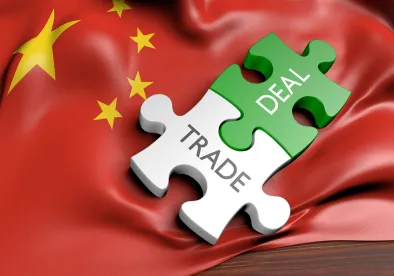The U.S. Trade Representative (USTR) plans to present recommendations soon to President Trump in connection with a Section 301 investigation of Chinese theft and forced transfer of intellectual property, according to trade advisor Peter Navarro. The USTR initiated the Section 301 investigation in August 2017, following an order from the president to examine “Chinese laws, policies, and practices which may be harming American intellectual property rights, innovation, or technology development,” including technology transfer and intellectual property policies that are “unreasonable or discriminatory and burden or restrict U.S. commerce.”
In a memorandum calling on the USTR to initiate the investigation, the president expressed concern that Chinese industrial policies undermine U.S. competitiveness by inhibiting U.S. exports, offshoring American jobs to China, exacerbating the U.S. trade deficit, and depriving U.S. citizens of proceeds from their intellectual property. While press sources have issued conflicting reports as to whether the president is already in the process of reviewing those recommendations or will receive them within the next few weeks, some reports indicate that he could announce additional tariffs as early as Friday, March 23.
Trump has pressured the Chinese president, Xi Jinping, to reduce China’s trade surplus with the United States, which currently stands at $375 billion, by $100 billion. According to sources within the administration, the USTR previously proposed a tariff package worth $30 billion, which the USTR calculated as equivalent to the market value of technologies that U.S. companies are forced to transfer without adequate compensation, as a condition of market access in China. However, President Trump reportedly rejected this proposal and directed the USTR to develop more comprehensive measures with a larger value. The USTR’s revised package is reportedly worth $60 billion and affects a broad array of Chinese products, ranging from information technology and telecommunications products to consumer electronics, home goods and clothing. The administration may also target industries and products that China aims to support through its “Made in China 2025” strategy.
The administration has also been reviewing parallel measures, such as curbing Chinese foreign direct investment in the United States, limiting access to visas for Chinese citizens, and heightening restrictions on dual-use exports to China.





 />i
/>i

